Volume 27, Issue 1
Displaying 1-15 of 15 articles from this issue
- |<
- <
- 1
- >
- >|
Special contribution
-
2021Volume 27Issue 1 Pages 1-3
Published: 2021
Released on J-STAGE: December 28, 2023
Download PDF (1016K) -
2021Volume 27Issue 1 Pages 4-7
Published: 2021
Released on J-STAGE: December 28, 2023
Download PDF (936K)
Editorial
-
2021Volume 27Issue 1 Pages 8-11
Published: 2021
Released on J-STAGE: December 28, 2023
Download PDF (822K)
Reviews
-
2021Volume 27Issue 1 Pages 12-15
Published: 2021
Released on J-STAGE: December 28, 2023
Download PDF (2853K) -
2021Volume 27Issue 1 Pages 16-24
Published: 2021
Released on J-STAGE: December 28, 2023
Download PDF (4774K)
Commentaries
-
2021Volume 27Issue 1 Pages 25-27
Published: 2021
Released on J-STAGE: December 28, 2023
Download PDF (1562K)
Original articles
-
2021Volume 27Issue 1 Pages 28-33
Published: 2021
Released on J-STAGE: December 28, 2023
Download PDF (900K) -
2021Volume 27Issue 1 Pages 34-40
Published: 2021
Released on J-STAGE: December 28, 2023
Download PDF (1008K) -
2021Volume 27Issue 1 Pages 41-49
Published: 2021
Released on J-STAGE: December 28, 2023
Download PDF (1184K) -
2021Volume 27Issue 1 Pages 50-57
Published: 2021
Released on J-STAGE: December 28, 2023
Download PDF (659K)
Clinical studies
-
2021Volume 27Issue 1 Pages 58-63
Published: 2021
Released on J-STAGE: December 28, 2023
Download PDF (2594K)
Case reports
-
2021Volume 27Issue 1 Pages 64-70
Published: 2021
Released on J-STAGE: December 28, 2023
Download PDF (2689K) -
2021Volume 27Issue 1 Pages 71-77
Published: 2021
Released on J-STAGE: December 28, 2023
Download PDF (4582K)
Coffee break
-
2021Volume 27Issue 1 Pages 78-79
Published: 2021
Released on J-STAGE: December 28, 2023
Download PDF (1224K)
Summary of debate
-
2021Volume 27Issue 1 Pages 80-94
Published: 2021
Released on J-STAGE: December 28, 2023
Download PDF (1408K)
- |<
- <
- 1
- >
- >|
